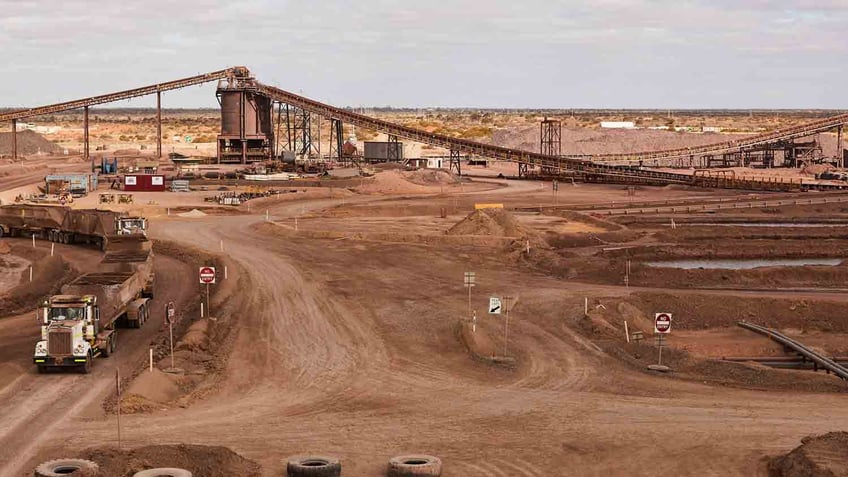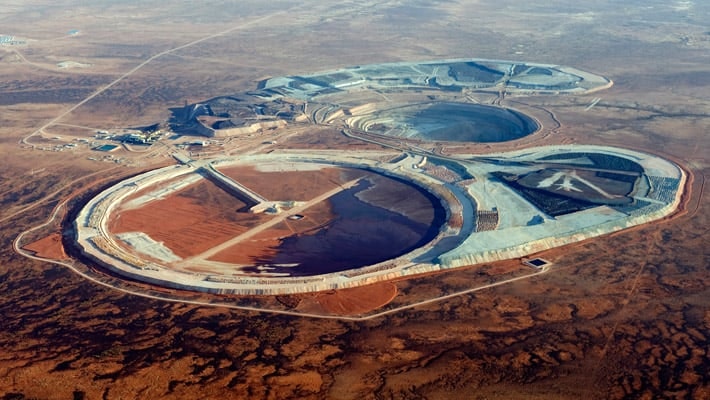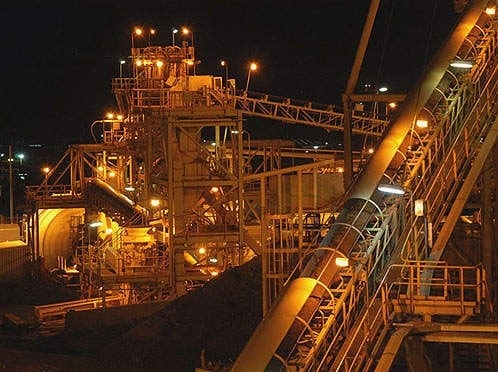Last Updated 12-03-2020.
Copper is one of the most-used metals worldwide, and while you’ll find copper throughout Australia, we’ve got the low-down on the biggest, and best-performing mines in the country.
Australia has approximately 6% of the copper resources in the world and is ranked third after Chile which has 25%, and the USA which has 16%, However, Wood Mackenzie recently completed a study that revealed that we can expect to have a worldwide supply deficit of copper by 2028.
Find mining equipment suppliers
Along with the numerous copper cables we all have in our houses, mobile phones, and computers, copper is also being used as a weapon in the fight against superbugs due to its incredible antimicrobial properties since it combats the spread of bacteria. So what are the top-performing Australian copper mines and can we expect to eventually meet this supply gap? Keep reading to learn more!
1. Olympic Dam Metal Mine, SA. Owned by BHP.

- Produces: Copper, uranium, silver and gold
- Mine type: Underground and surface
- Location: SA
- Copper Reserves: 146mt graded at 1.98% proven
- Production Started: 1988
The Olympic Dam mine is one of the largest in Australia. The mine is also one of the most productive in the world, with 154 million tonnes of proven reserves, including a copper grade of 2.06% and a gold grade of 0.68 grams per tonne as of June 2018.
Located 560km from Adelaide, the project was originally opened by WMC resources who discovered the deposit in 1975 and started mining in 1988. BHP purchased the Olympic Dam mine in 2005 for AUD $9.2bn , and is licensed to mine the site until 2036. As of the end of 2018, the Olympic Dam was the fifth largest copper producer in the world, and boasted the world’s largest uranium deposit, making it one of the more versatile mining operations on the planet.
Olympic Dam is made up of underground and surface operations and operates a fully integrated processing facility from ore to metal. The underground mine is made up of more than 450 kilometres of underground roads and tunnels. Ore mined underground is hauled by an automated train system to crushing, storage and ore hoisting facilities.
In November 2018, BHP announced a discovery 65 kilometers southeast of Olympic Dam.
A potential new iron oxide, copper, and gold mineralised system were uncovered as part of their ongoing copper exploration program. Olympic Dam has a range of future growth options to consider as part of its sustained, long-term growth strategy, including the Brownfield Expansion project. The Brownfield Expansion project has the potential to result in production growing at Olympic Dam to approximately 240-300 kilotonnes per annum (ktpa). For work opportunities at the Olympic Dam mine, visit BHP's careers pages.
2. X41 and Enterprise Mines, QLD. Owned by Glencore PLC (indirect) & Mount Isa Mines Ltd (direct).

- Produces: Copper
- Mine type: Sub-level stoping
- Location: QLD
- Copper Reserves: 68Mt proven (2005)
- Production Started: 1993
Mount Isa is the second largest copper producer in Australia and there are approximately 416 million tonnes of copper resources in Mount Isa, mined at both the X41 and Enterprise mines, with the capacity to process 6.5 million tonnes each year (Mtpa).
The Enterprise mine is Australia’s deepest mine, with an internal shaft, which reaches a depth of 1,900m. Previous laws had the copper smelter ceasing operations in 2016, which would have ended hundreds of jobs in Townsville and Mouth Isa, but the State Government changed the environmental legislation so that smelting operations can now continue until 2022.
Copper ore is mined in the X41 and Enterprise underground mines using traditional sub-level open stoping methods. Once the ore is loosened by drilling and blasting it is then mucked, roughly crushed, then hoisted to the surface for processing. Mount Isa Mines provide employment for more than 2,000 employees and contractors, you can view current vacancies on the Glencore website.
3. Prominent Hill Copper Mine, SA. Owned by OZ Minerals.

- Produces: Gold and copper
- Mine type: Open-pit
- Location: SA
- Copper Reserves: 69.8Mt grading at 1.1% (as of 2012)
- Production Started: 2009
Prominent Hill, owned solely by OZ Minerals, is another large Australian copper mine, producing 110,111 tonnes in 2018. The copper concentrate produced here is one of the highest grades on the open market. Prominent Hill is an iron oxide copper gold (IOCG) deposit located in the Gawler Craton, South Australia.
The Gawler Craton covers approximately 600,000 square kilometres of South Australia. The Gawler Craton hosts Olympic Dam , Prominent Hill , Carrapateena, and a number of other smaller and subeconomic copper-gold deposits. In 2016, OZ Minerals announced the expansion of the underground pit, saying that is expected to operate throughout the next decade.
In early 2019, the company announced it will focus on a series of project developments in 2019 after generating $1.1 billion in net revenues and exceeding its production guidance the previous year. The operation is a fly-in fly-out site and more information on work at Prominent Hill can be found on their Careers page.
4. Golden Grove Copper Mine, WA. Owned by Minerals and Metals Group (MMG).

- Produces: Copper, Zinc and precious metal concentrates
- Mine type: Underground, sublevel open stoping
- Location: WA
- Copper Reserves: 0.7Mt
- Production Started: 1990
- Mine Life: 2019
Golden Grove is located in Western Australia, approximately 280km east of Geraldton and 450km northeast of Perth. This mine has been producing copper and zinc since 1990, was once owned by Australian Consolidated Minerals and is now owned by MMG. Golden Grove is actually two underground mines, located 3km apart and they’re known as Gossan Hill and Scuddles, producing 26,048 tonnes of copper last year. The copper from Golden Grove is exported to Thailand, India, Japan, Korea, and China through the Port of Geraldton.
The Golden Grove Mine has seen 27 years of continuous production with over 10 years of mine life in Reserve. According to ERM Golden Grove , further expansion will take place through the continued development of its world class Xantho Extended ore body. Looking for work? Check out this link for careers with EMR Golden Grove .
5. Capricorn Copper Mine, QLD. Owned by Capricorn Copper.

- Produces: Copper
- Mine type: Underground
- Location: QLD
- Copper Reserves: 8.47Mt
- Production Started: November 2017
The Capricorn Copper mine (formerly called Mt Gordon and Gunpowder mines) is located approximatley 125km north-west of Mt Isa in north-west Queensland. The copper mine is hosted within the Western Fold Belt of the Mount Isa Inlier. While the mine was put into maintenance in 2013, EMR Capital and Lighthouse Minerals bought Mount Gordon and put the mine into production commencing November 2017.
The high-grade resource is expected to contain more than 900,000t of copper metal and is anticipated to produce 30 kilo tonnes per annum (ktpa) of copper concentrate over its initial mine life of ten years. CEO Carl Hallion says that there is still a good 15 years of life left in the mine, and he considers it one of the strongest mines in Australia. The mine comprises five deposits, namely Mammoth, Mammoth North, Esperanza-Pluto, Esperanza South, and Greenstone.
The proven and probable ore reserves of Capricorn copper mine are estimated at 8.47 million tonnes (Mt) containing 167,600t of copper metal grading 1.98% Cu. Visit the Capricorn Copper website to find out about career opportunities .
What country has the most copper reserves in the world?
Chile has the largest copper reserves of any country by far, according to a study done by Statista , with 200 million metric tons as of 2019. Chile is also the world's largest copper producer, having produced approximately 5.6 million metric tons of copper from mines in 2018.
What is copper?
Copper (chemical element Cu) is a malleable, soft, and ductile metal with a remarkably high thermal and electrical conductivity. Pure surfaces of copper will typically have a pinkish-orange colour. Copper’s melting point is a staggering 1,085 degrees celsius, with an atomic mass of 63.546 u.
What is copper used for?
Copper has a number of functions. It’s typically used in electrical equipment such as motors and wiring. This is because Copper is able to conduct both electricity and heat very well and can be drawn into wires with ease. Copper is widely used throughout the construction industry for things like roofing, plumbing and industrial machinery.
Where is copper mined in Australia?
There are several major Copper mines in Australia currently in operation. It’s currently mined throughout Tasmania, Western Australia, South Australia, New South Wales, and most prolifically in Queensland.
How is copper mined?
Copper is found throughout the Earth’s crust and is extracted from its ore through one of two techniques. The first option is underground mining, where a vertical shaft is sunk into the Earth at an appropriate depth, driving horizontal tunnels into the ore.
The second method is the ‘open pit’ mining method. Ores near the surface can be quarried after the excavation of the surface layers. Ore is then treated with dilute sulfuric acid, which trickles slowly through the ore, dissolving copper to form copper sulphate. The copper is recovered by electrolytic refining.
This method accounts for 90% of all Copper mining globally. Want to learn more about mining in Australia? Check out our article on Australia's 6 biggest mining companies . To keep up-to-date with the latest industry and project news, subscribe to iseekplant’s Constructionsht blog today!


